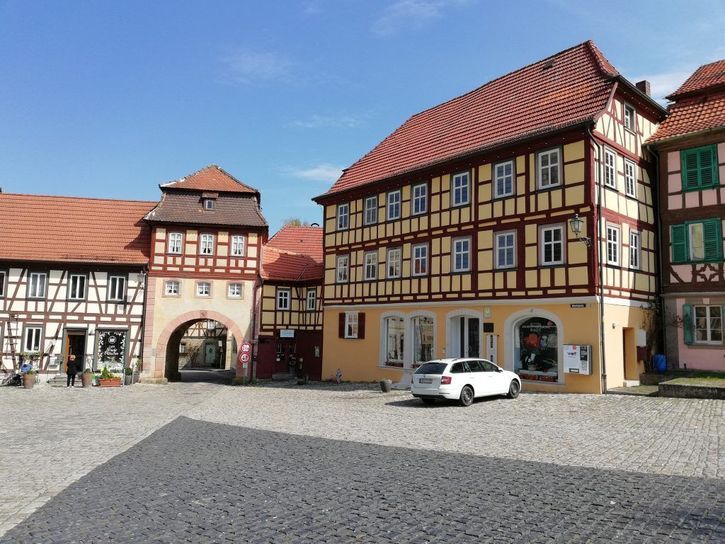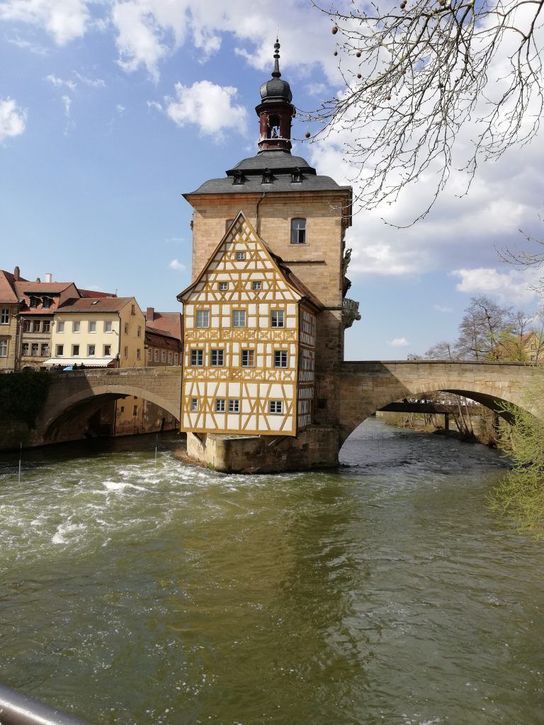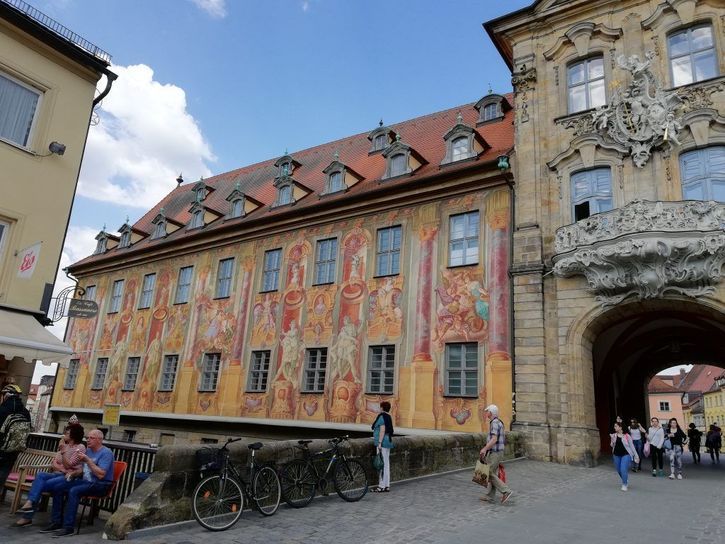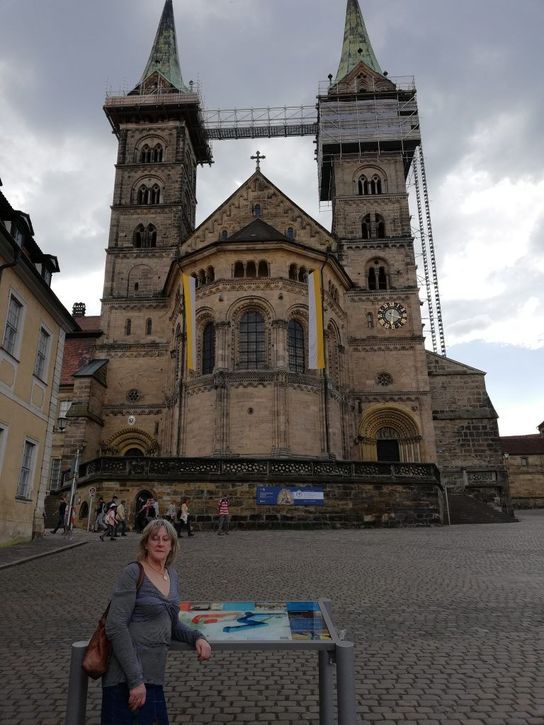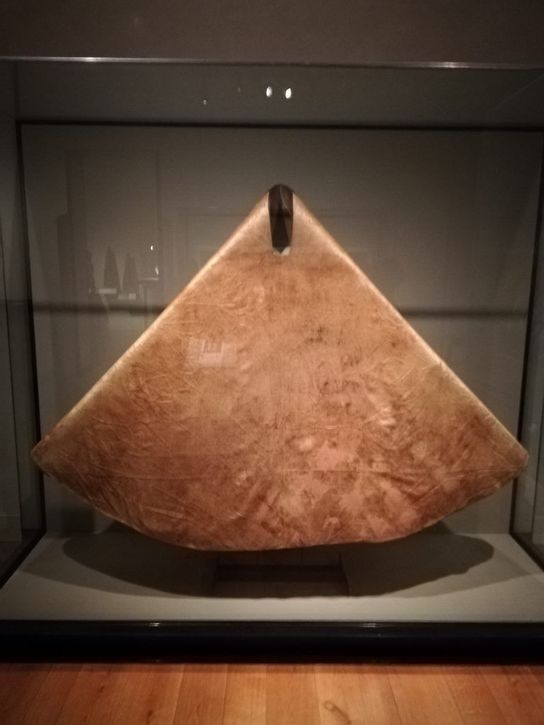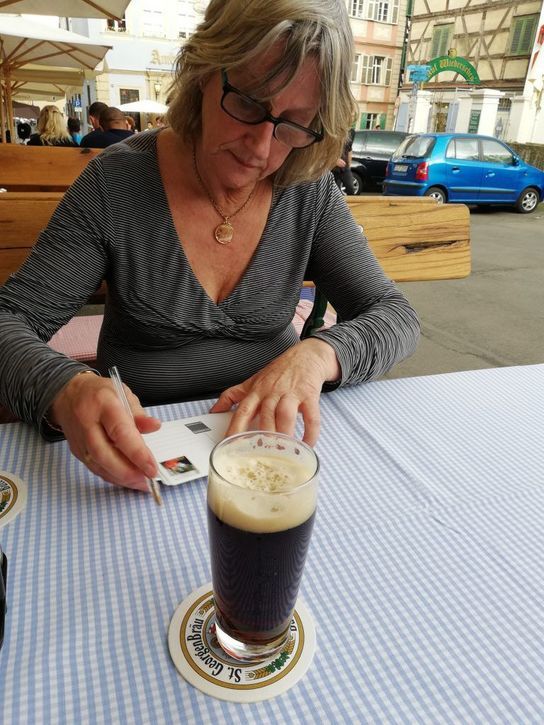The early part of the day was wasted in Zeil while waiting for the Hexenturm museum to open. It didn’t, and we couldn’t find out whether it would from the Tourist Information Office because that didn’t open either. A snotty report will be sent to Tripadvisor. Part of the time was spent visiting the beautiful little town of Konigsberg.
We then drove to Bamberg, which was first mentioned in 907 and the first bishop when it became a separate diocese in 1007 subsequently became the Holy Roman Emperor, Henry II. Bamberg became centre of the Holy Roman Empire in 1020.
After getting lost, we eventually found the iconic Rathaus (town hall) built on a bridge over the Linker Regnitz river and then visited the Dom (Cathedral). The first cathedral was consecrated in 1012 and the present building was finished in 1237. It contains the tombs of Henry II and his wife Kunigunde as well as that of Pope Clemens II. The building is extremely austere. The Diocesan Museum is effectively part of the cathedral; it contains mantles decorated with gold thread belonging to Henry II (dating to 1042) and Pope Clemens II (who died in 1047) and the shroud of Bishop Gunter (1065). We also wanted to see St Michaels Monastery with its famous ceiling painted with 578 flowers and herbs but it is being restored and is closed to the public. We then went to eat at the excellent Sheiners bar in Katzenberg Gasse and imbibed a glass of the famous rausch beer. Bamberg has 9 breweries and 76 bars.
